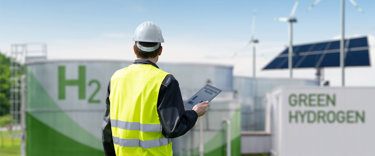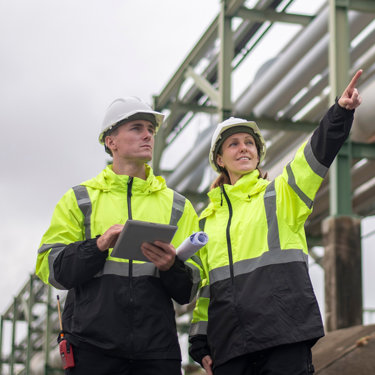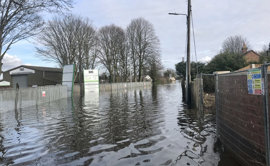Are we headed for hydrogen?
Published: 6 June 2024
Energy – where we get it, how much it costs, and its impact on our planet – is as much of a talking point these days as the Great British Weather.
The costs of energy
As the cost of living soars, so too have energy prices. Everyone has an eye on their bills. But bills aren’t the only concern. Changes in our climate are gathering pace – even on this chilly little island. The question on all our minds is whether it’s possible to keep our families warm and fed on a budget, yet still make greener energy choices?
The problem
Natural gas dominates domestic energy demand, supplying 66% of total domestic energy needs to over 22 million UK homes in 2021. A change to this large footprint would have immediate impact. There is a huge incentive to find a cleaner alternative to natural gas that can be stored in volumes able to meet consumer swings in demand.
The case for hydrogen
All major research points to hydrogen having a critical role in getting the UK closer to Net Zero 2050.
While natural gas produces carbon dioxide when burnt, hydrogen – crucially – does not. Alongside carbon capture and the development of hydrogen-ready domestic appliances, hydrogen could also be used in the UK’s existing gas network, making it a relatively cost-effective choice, too. Conversion could not only respond to legislative commitments but ensure that the public and industry can still benefit from continuity of gas supply.

What’s happening now?
Several major hydrogen projects have been under way across the UK for some time. Gas networks are collaborating on the build, operation, and testing of new hydrogen and repurposed networks under the ‘Gas Goes Green’ programme.
In North West England, HyNet is a hydrogen energy and Carbon Capture, Usage and Storage (CCUS) project. The goal of HyNet is to reduce carbon emissions from industry, homes, and transport whilst supporting economic growth in the region.
A collaboration between National Gas, Northern Gas Networks, and Cadent to connect planned hydrogen production and storage with industrial users in the east coast region.
Established at Keele University, Staffordshire, HyDeploy was the first ever live demonstration of hydrogen in homes. The project aimed to prove that blending up to 20% volume of hydrogen with natural gas is a safe and greener alternative to the gas we use now. In December 2023, the Government has taken a strategic policy decision to support blending of up to 20% hydrogen by volume into GB gas distribution networks.
H21 is a suite of pioneering gas industry projects led by Northern Gas Networks, demonstrating how the existing UK gas grid can be repurposed to carry 100% hydrogen, so that the UK can meet its 2050 objectives.
SGN’s H100 project in the Buckhaven and Denbeath areas of Levenmouth, Fife is progressing well. This is the UK’s first new, all polyethylene network to carry 100% hydrogen produced by an electrolysis plant and powered by offshore wind turbine.
The focus of the Hy4Heat programme is ‘downstream of the meter’. It explores the end-user context – examining the safety issues associated with using hydrogen in buildings, and the need to develop new domestic appliances that burn hydrogen rather than methane.
National Grid’s focus is the safe transport of hydrogen around the transmission network as part of the Hydrogen National Transmission System (HyNTS) programme.
How Adler & Allan is involved
Delivering bold initiatives like these exerts a huge demand on companies and their people at every stage. Having skilled service providers on-side is critical to success. Group company QEM Solutions, has been supporting several of the gas networks as they collaborate on these ambitious programmes. QEM’s services are particularly valued during the complex initiation stages and the ‘heavy-lifting’ that goes into project start-ups of this scale.
The task of transforming the UK’s natural gas network to hydrogen has many challenges ahead – not least that 2050 and visible climate change both loom large. But a clean energy future and a healthier planet are goals well worth striving for: we’re proud to set our sights on them.
More from our Knowledge Hub
Environmental compliance today, creating a sustainable tomorrow
Helping you reduce risk to the environment and your operation by managing assets compliantly while achieving commercial, ESG, and net-zero goals.
Contact our experts




